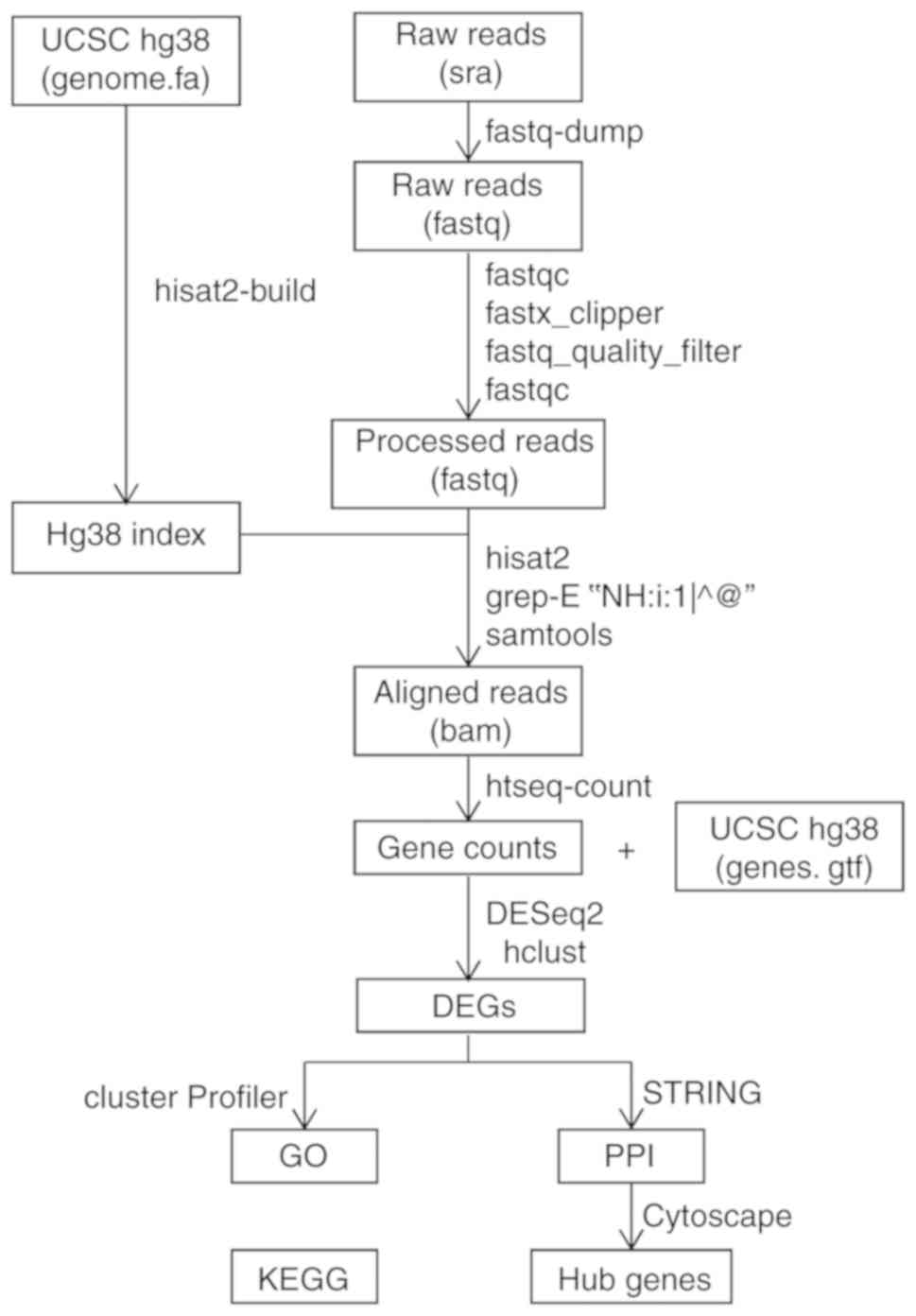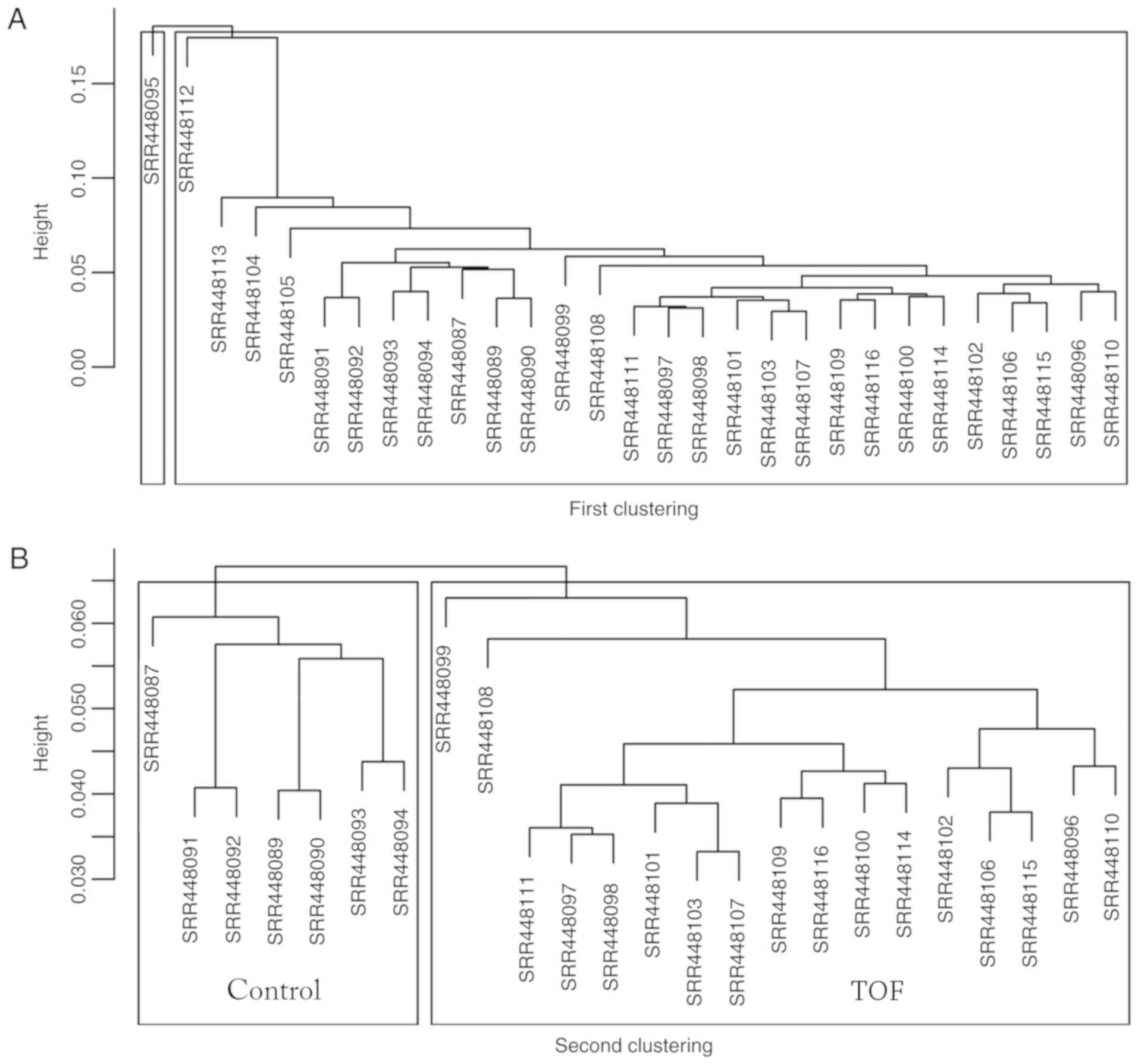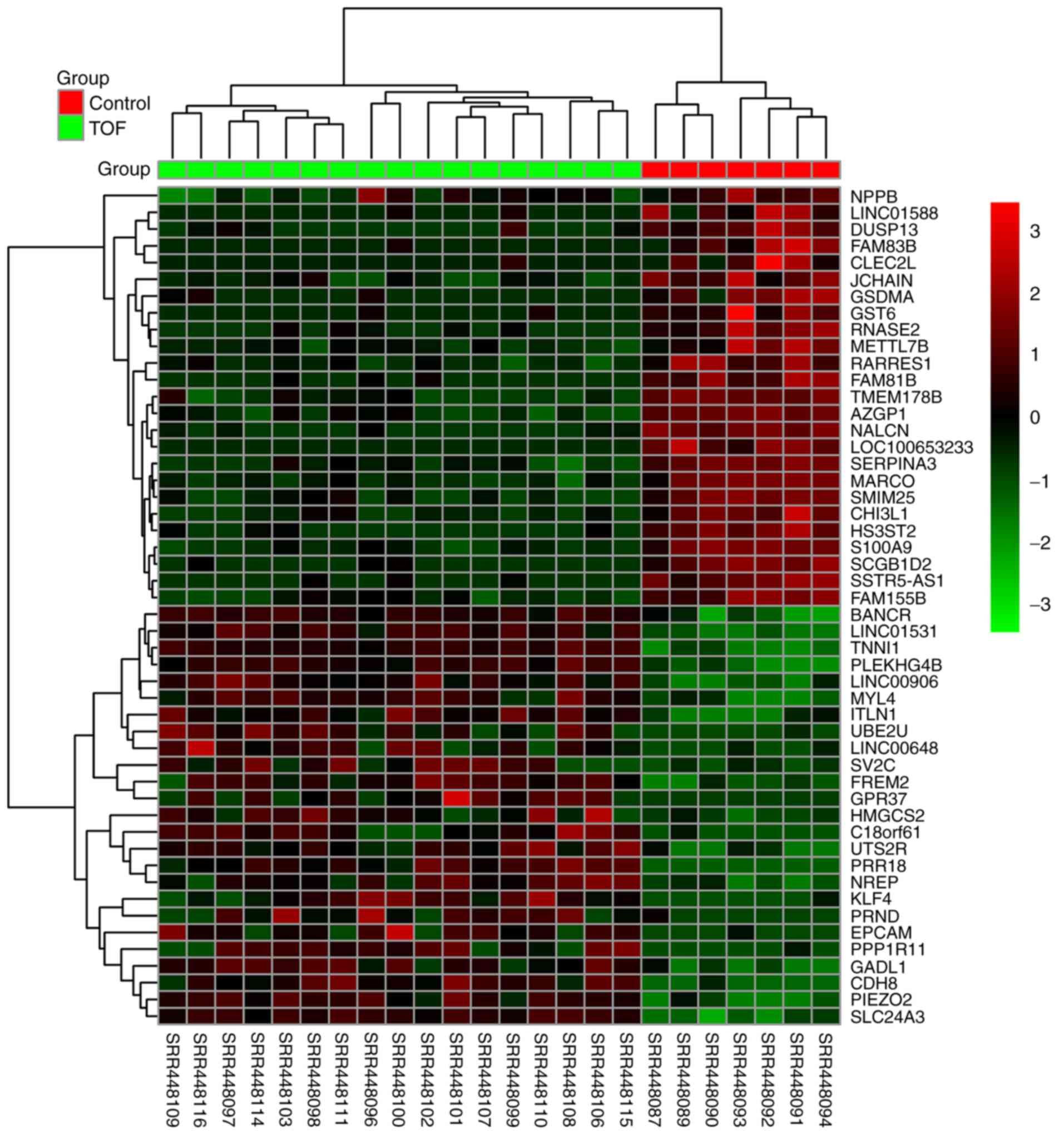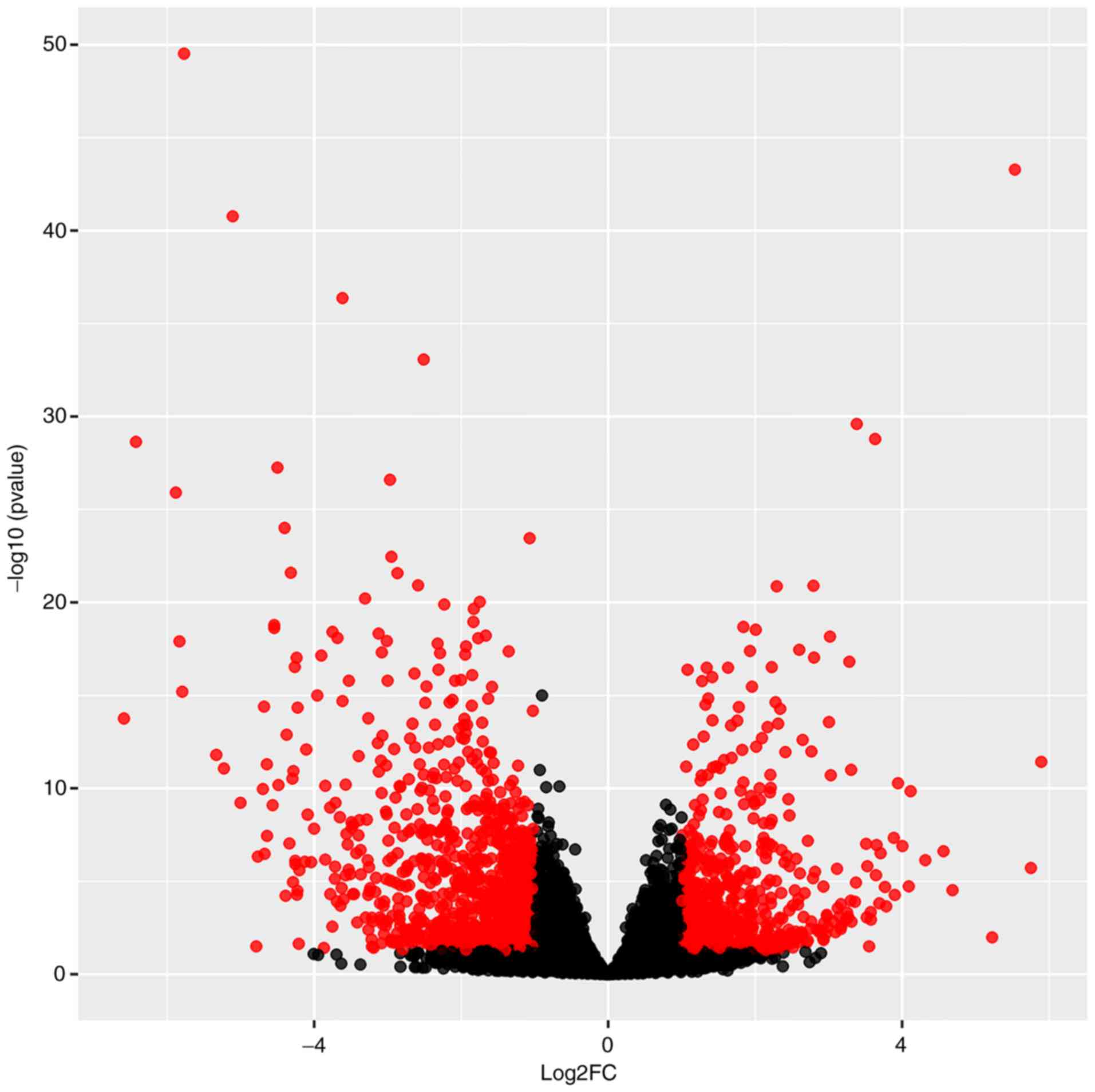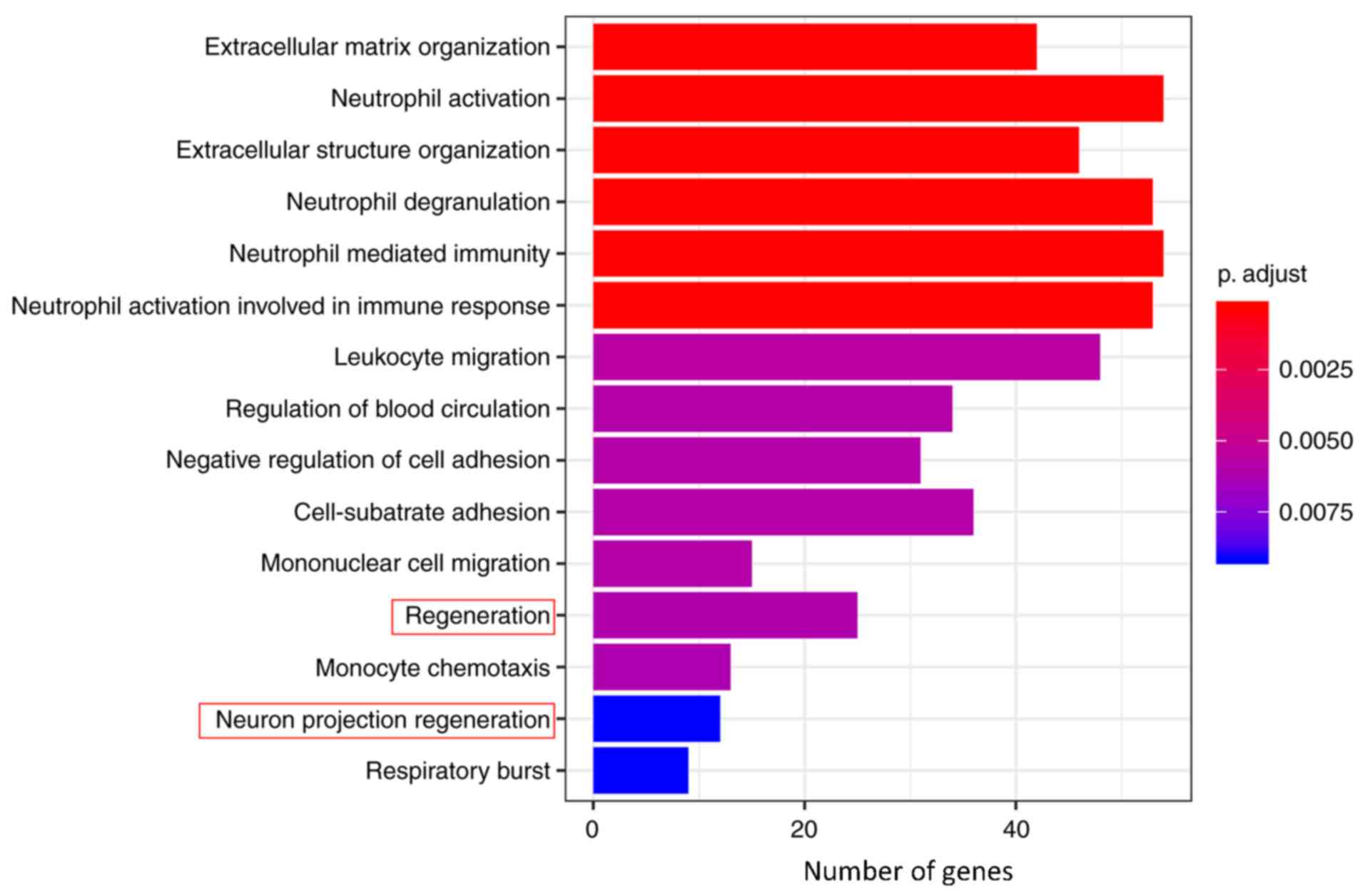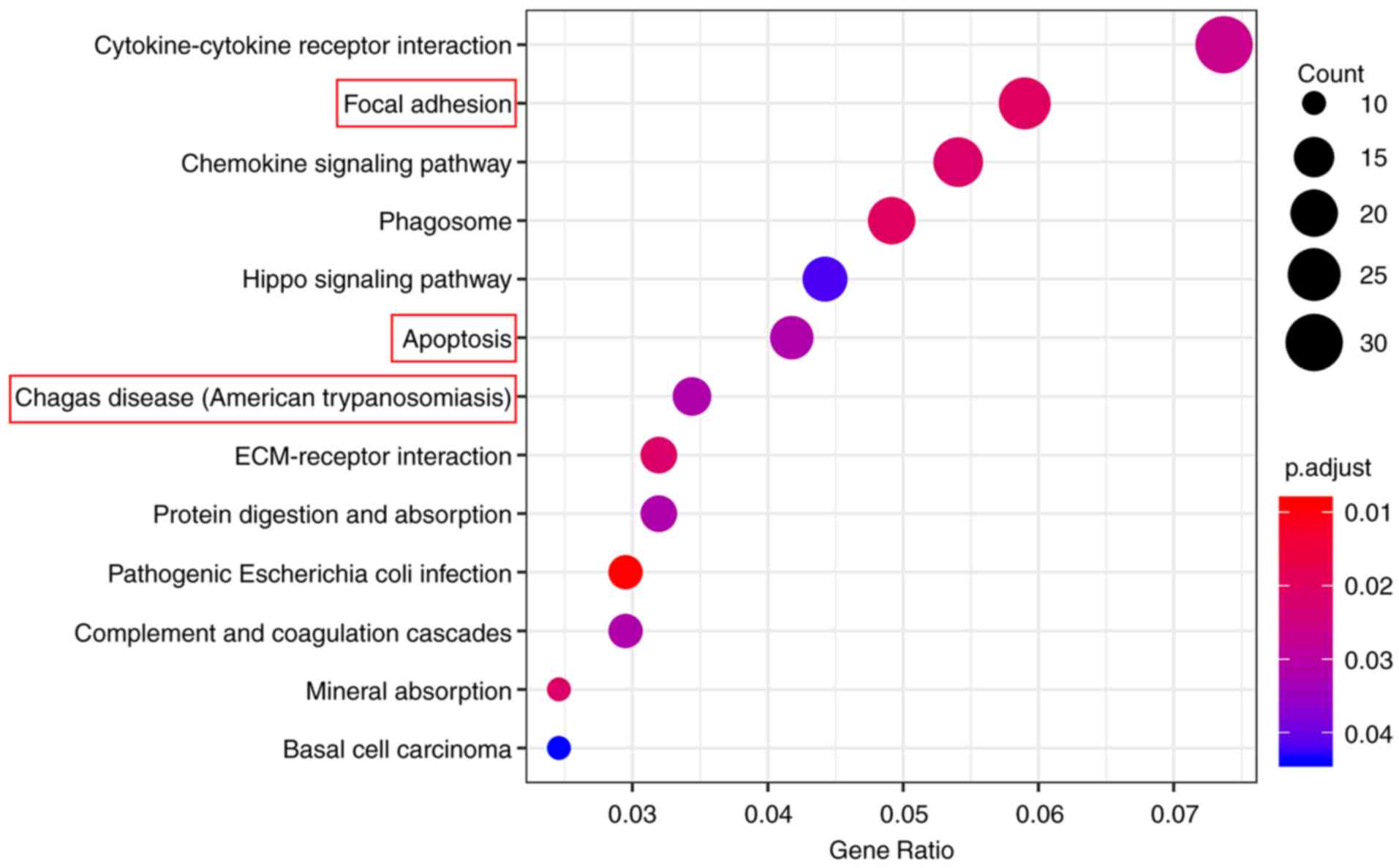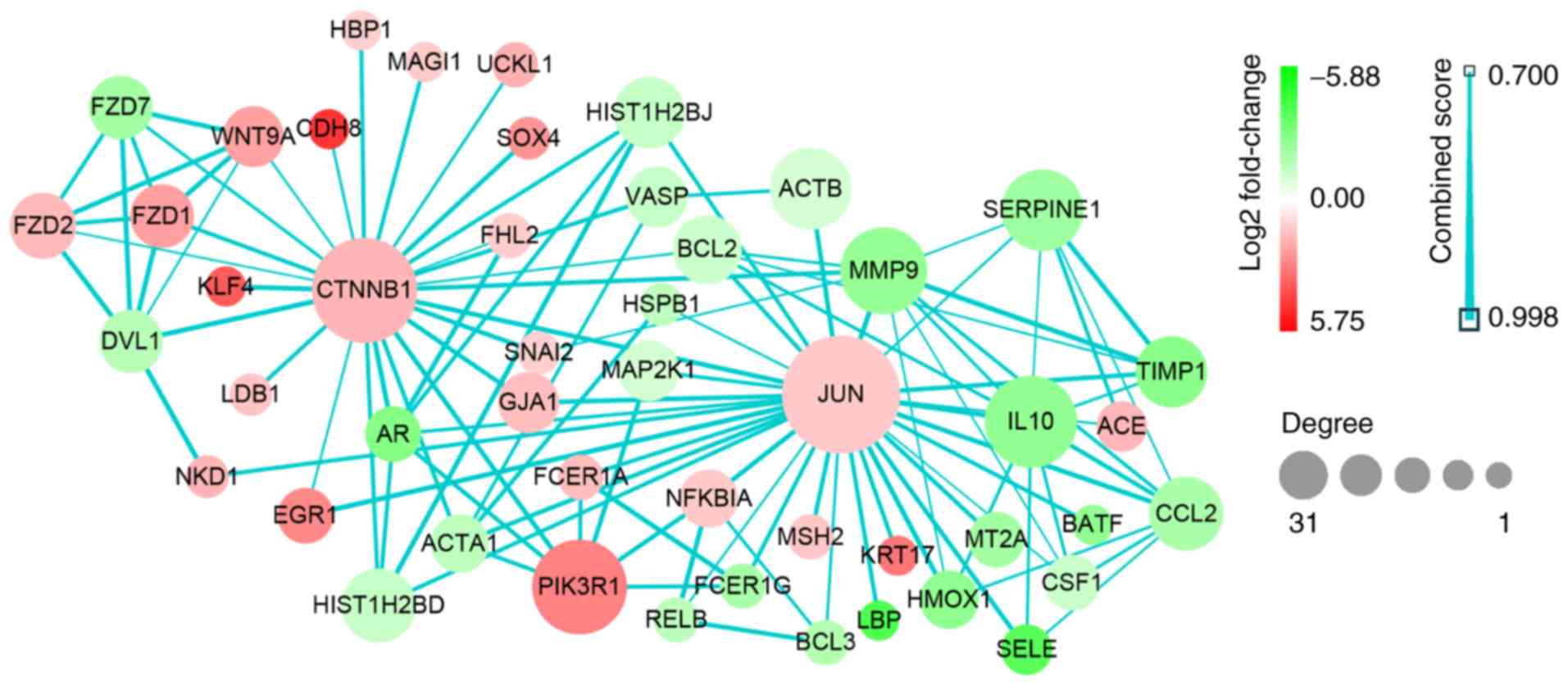|
1
|
Compernolle V, Brusselmans K, Franco D,
Moorman A, Dewerchin M, Collen D and Carmeliet P: Cardia bifida,
defective heart development and abnormal neural crest migration in
embryos lacking hypoxia-inducible factor-1alpha. Cardiovasc Res.
60:569–579. 2003. View Article : Google Scholar : PubMed/NCBI
|
|
2
|
Burchell HB, Taylor BE, et al: Circulatory
adjustments to the hypoxemia of congenital heart disease of the
cyanotic type. Circulation. 1:404–414. 1950. View Article : Google Scholar : PubMed/NCBI
|
|
3
|
Fan X, Ma L, Zhang Z, Li Y, Hao M, Zhao Z,
Zhao Y, Liu F, Liu L, Luo X, et al: Associations of high-altitude
polycythemia with polymorphisms in PIK3CD and COL4A3 in Tibetan
populations. Hum Genomics. 12:372018. View Article : Google Scholar : PubMed/NCBI
|
|
4
|
Humayun KN and Atiq M: Clinical profile
and outcome of cyanotic congenital heart disease in neonates. J
Coll Physicians Surg Pak. 18:290–293. 2008.PubMed/NCBI
|
|
5
|
Rafiee P, Shi Y, Kong X, Pritchard KA Jr,
Tweddell JS, Litwin SB, Mussatto K, Jaquiss RD, Su J and Baker JE:
Activation of protein kinases in chronically hypoxic infant human
and rabbit hearts: Role in cardioprotection. Circulation.
106:239–245. 2002. View Article : Google Scholar : PubMed/NCBI
|
|
6
|
He S, Liu P, Jian Z, Li J, Zhu Y, Feng Z
and Xiao Y: miR-138 protects cardiomyocytes from hypoxia-induced
apoptosis via MLK3/JNK/c-jun pathway. Biochem Biophys Res Commun.
441:763–769. 2013. View Article : Google Scholar : PubMed/NCBI
|
|
7
|
He S, Liu S, Wu X, Xin M, Ding S, Xin D,
Ouyang H and Zhang J: Protective role of downregulated MLK3 in
myocardial adaptation to chronic hypoxia. J Physiol Biochem.
73:371–380. 2016. View Article : Google Scholar : PubMed/NCBI
|
|
8
|
Liu B, Zhang HG, Zhu Y, Jiang YH, Luo GP,
Tang FQ, Jian Z and Xiao YB: Cardiac resident macrophages are
involved in hypoxiainduced postnatal cardiomyocyte proliferation.
Mol Med Rep. 15:3541–3548. 2017. View Article : Google Scholar : PubMed/NCBI
|
|
9
|
Laflamme MA and Murry CE: Heart
regeneration. Nature. 473:326–335. 2011. View Article : Google Scholar : PubMed/NCBI
|
|
10
|
Churko JM, Mantalas GL, Snyder MP and Wu
JC: Overview of high throughput sequencing technologies to
elucidate molecular pathways in cardiovascular diseases. Circ Res.
112:1613–1623. 2013. View Article : Google Scholar : PubMed/NCBI
|
|
11
|
Manzoni C, Kia DA, Vandrovcova J, Hardy J,
Wood NW, Lewis PA and Ferrari R: Genome, transcriptome and
proteome: The rise of omics data and their integration in
biomedical sciences. Brief Bioinform. 19:286–302. 2018. View Article : Google Scholar : PubMed/NCBI
|
|
12
|
Grunert M, Dorn C, Schueler M, Dunkel I,
Schlesinger J, Mebus S, Alexi-Meskishvili V, Perrot A, Wassilew K,
Timmermann B, et al: Rare and private variations in neural crest,
apoptosis and sarcomere genes define the polygenic background of
isolated Tetralogy of Fallot. Hum Mol Genet. 23:3115–3128. 2014.
View Article : Google Scholar : PubMed/NCBI
|
|
13
|
Ghorbel MT, Cherif M, Jenkins E, Mokhtari
A, Kenny D, Angelini GD and Caputo M: Transcriptomic analysis of
patients with tetralogy of Fallot reveals the effect of chronic
hypoxia on myocardial gene expression. J Thorac Cardiovasc Surg.
140:337–345.e26. 2010. View Article : Google Scholar : PubMed/NCBI
|
|
14
|
Ahmed M, Nguyen HQ, Hwang JS, Zada S, Lai
TH, Kang SS and Kim DR: Systematic characterization of
autophagy-related genes during the adipocyte differentiation using
public-access data. Oncotarget. 9:15526–15541. 2018. View Article : Google Scholar : PubMed/NCBI
|
|
15
|
Ashburner M, Ball CA, Blake JA, Botstein
D, Butler H, Cherry JM, Davis AP, Dolinski K, Dwight SS, Eppig JT,
et al: Gene ontology: Tool for the unification of biology. The Gene
Ontology Consortium. Nat Genet. 25:25–29. 2000. View Article : Google Scholar : PubMed/NCBI
|
|
16
|
Kanehisa M and Goto S: KEGG: Kyoto
encyclopedia of genes and genomes. Nucleic Acids Res. 28:27–30.
2000. View Article : Google Scholar : PubMed/NCBI
|
|
17
|
Yu G, Wang LG, Han Y and He QY:
clusterProfiler: An R package for comparing biological themes among
gene clusters. OMICS. 16:284–287. 2012. View Article : Google Scholar : PubMed/NCBI
|
|
18
|
Szklarczyk D, Franceschini A, Wyder S,
Forslund K, Heller D, Huerta-Cepas J, Simonovic M, Roth A, Santos
A, Tsafou KP, et al: STRING v10: Protein-protein interaction
networks, integrated over the tree of life. Nucleic Acids Res.
43:Database Issue. D447–D452. 2015. View Article : Google Scholar : PubMed/NCBI
|
|
19
|
Roy S, Bhattacharyya DK and Kalita JK:
Reconstruction of gene co-expression network from microarray data
using local expression patterns. BMC Bioinformatics. 15 (Suppl
7):S102014. View Article : Google Scholar : PubMed/NCBI
|
|
20
|
Bosco MC, Puppo M, Santangelo C, Anfosso
L, Pfeffer U, Fardin P, Battaglia F and Varesio L: Hypoxia modifies
the transcriptome of primary human monocytes: Modulation of novel
immune-related genes and identification of CC-chemokine ligand 20
as a new hypoxia-inducible gene. J Immunol. 177:1941–1955. 2006.
View Article : Google Scholar : PubMed/NCBI
|
|
21
|
Murdoch C, Muthana M and Lewis CE: Hypoxia
regulates macrophage functions in inflammation. J Immunol.
175:6257–6263. 2005. View Article : Google Scholar : PubMed/NCBI
|
|
22
|
Hoenderdos K, Lodge KM, Hirst RA, Chen C,
Palazzo SG, Emerenciana A, Summers C, Angyal A, Porter L, Juss JK,
et al: Hypoxia upregulates neutrophil degranulation and potential
for tissue injury. Thorax. 71:1030–1038. 2016. View Article : Google Scholar : PubMed/NCBI
|
|
23
|
Bartels K, Grenz A and Eltzschig HK:
Hypoxia and inflammation are two sides of the same coin. Proc Natl
Acad Sci USA. 110:18351–18352. 2013. View Article : Google Scholar : PubMed/NCBI
|
|
24
|
Taylor CT and Colgan SP: Regulation of
immunity and inflammation by hypoxia in immunological niches. Nat
Rev Immunol. 17:774–785. 2017. View Article : Google Scholar : PubMed/NCBI
|
|
25
|
Nakada Y, Canseco DC, Thet S, Abdisalaam
S, Asaithamby A, Santos CX, Shah AM, Zhang H, Faber JE, Kinter MT,
et al: Hypoxia induces heart regeneration in adult mice. Nature.
541:222–227. 2017. View Article : Google Scholar : PubMed/NCBI
|
|
26
|
Chen CS, Alonso JL, Ostuni E, Whitesides
GM and Ingber DE: Cell shape provides global control of focal
adhesion assembly. Biochem Biophys Res Commun. 307:355–361. 2003.
View Article : Google Scholar : PubMed/NCBI
|
|
27
|
Zaidel-Bar R, Cohen M, Addadi L and Geiger
B: Hierarchical assembly of cell-matrix adhesion complexes. Biochem
Soc Trans. 32:416–420. 2004. View Article : Google Scholar : PubMed/NCBI
|
|
28
|
Vadali K, Cai X and Schaller MD: Focal
adhesion kinase: An essential kinase in the regulation of
cardiovascular functions. IUBMB Life. 59:709–716. 2007. View Article : Google Scholar : PubMed/NCBI
|
|
29
|
Seko Y, Takahashi N, Sabe H, Tobe K,
Kadowaki T and Nagai R: Hypoxia induces activation and subcellular
translocation of focal adhesion kinase (p125(FAK)) in cultured rat
cardiac myocytes. Biochem Biophys Res Commun. 262:290–296. 1999.
View Article : Google Scholar : PubMed/NCBI
|
|
30
|
Jung F, Weiland U, Johns RA, Ihling C and
Dimmeler S: Chronic hypoxia induces apoptosis in cardiac myocytes:
A possible role for Bcl-2-like proteins. Biochem Biophys Res
Commun. 286:419–425. 2001. View Article : Google Scholar : PubMed/NCBI
|
|
31
|
Smrcka AV: G protein β subunits: Central
mediators of G protein-coupled receptor signaling. Cell Mol Life
Sci. 65:2191–2214. 2008. View Article : Google Scholar : PubMed/NCBI
|
|
32
|
Ruiz-Velasco V, Ikeda SR and Puhl HL:
Cloning, tissue distribution, and functional expression of the
human G protein beta 4-subunit. Physiol Genomics. 8:41–50. 2002.
View Article : Google Scholar : PubMed/NCBI
|
|
33
|
Rosskopf D, Nikula C, Manthey I, Joisten
M, Frey U, Kohnen S and Siffert W: The human G protein beta4
subunit: Gene structure, expression, Ggamma and effector
interaction. FEBS Lett. 544:27–32. 2003. View Article : Google Scholar : PubMed/NCBI
|
|
34
|
Clapham DE and Neer EJ: G protein beta
gamma subunits. Annu Rev Pharmacol Toxicol. 37:167–203. 1997.
View Article : Google Scholar : PubMed/NCBI
|
|
35
|
Adams JW and Brown JH: G-proteins in
growth and apoptosis: Lessons from the heart. Oncogene.
20:1626–1634. 2001. View Article : Google Scholar : PubMed/NCBI
|
|
36
|
Reichel CA, Khandoga A, Anders HJ,
Schlondorff D, Luckow B and Krombach F: Chemokine receptors Ccr1,
Ccr2, and Ccr5 mediate neutrophil migration to postischemic tissue.
J Leukoc Biol. 79:114–122. 2006. View Article : Google Scholar : PubMed/NCBI
|
|
37
|
Liehn EA, Merx MW, Postea O, Becher S,
Djalali-Talab Y, Shagdarsuren E, Kelm M, Zernecke A and Weber C:
Ccr1 deficiency reduces inflammatory remodelling and preserves left
ventricular function after myocardial infarction. J Cell Mol Med.
12:496–506. 2008. View Article : Google Scholar : PubMed/NCBI
|
|
38
|
Majmudar MD, Keliher EJ, Heidt T,
Leuschner F, Truelove J, Sena BF, Gorbatov R, Iwamoto Y, Dutta P,
Wojtkiewicz G, et al: Monocyte-directed RNAi targeting CCR2
improves infarct healing in atherosclerosis-prone mice.
Circulation. 127:2038–2046. 2013. View Article : Google Scholar : PubMed/NCBI
|
|
39
|
Hayasaki T, Kaikita K, Okuma T, Yamamoto
E, Kuziel WA, Ogawa H and Takeya M: CC chemokine receptor-2
deficiency attenuates oxidative stress and infarct size caused by
myocardial ischemia-reperfusion in mice. Circ J. 70:342–351. 2006.
View Article : Google Scholar : PubMed/NCBI
|
|
40
|
Zhou L, Azfer A, Niu J, Graham S,
Choudhury M, Adamski FM, Younce C, Binkley PF and Kolattukudy PE:
Monocyte chemoattractant protein-1 induces a novel transcription
factor that causes cardiac myocyte apoptosis and ventricular
dysfunction. Circ Res. 98:1177–1185. 2006. View Article : Google Scholar : PubMed/NCBI
|
|
41
|
Gawaz M and Vogel S: Platelets in tissue
repair: Control of apoptosis and interactions with regenerative
cells. Blood. 122:2550–2554. 2013. View Article : Google Scholar : PubMed/NCBI
|
|
42
|
Tanaka T, Manome Y, Wen P, Kufe DW and
Fine HA: Viral vector-mediated transduction of a modified platelet
factor 4 cDNA inhibits angiogenesis and tumor growth. Nat Med.
3:437–442. 1997. View Article : Google Scholar : PubMed/NCBI
|
|
43
|
Liang P, Cheng SH, Cheng CK, Lau KM, Lin
SY, Chow EY, Chan NP, Ip RK, Wong RS and Ng MH: Platelet factor 4
induces cell apoptosis by inhibition of STAT3 via up-regulation of
SOCS3 expression in multiple myeloma. Haematologica. 98:288–295.
2013. View Article : Google Scholar : PubMed/NCBI
|
|
44
|
Deuel TF, Senior RM, Chang D, Griffin GL,
Heinrikson RL and Kaiser ET: Platelet factor 4 is chemotactic for
neutrophils and monocytes. Proc Natl Acad Sci USA. 78:4584–4587.
1981. View Article : Google Scholar : PubMed/NCBI
|
|
45
|
Fox JM, Kausar F, Day A, Osborne M,
Hussain K, Mueller A, Lin J, Tsuchiya T, Kanegasaki S and Pease JE:
CXCL4/Platelet Factor 4 is an agonist of CCR1 and drives human
monocyte migration. Sci Rep. 8:94662018. View Article : Google Scholar : PubMed/NCBI
|
|
46
|
Lam AP and Gottardi CJ: β-catenin
signaling: A novel mediator of fibrosis and potential therapeutic
target. Curr Opin Rheumatol. 23:562–567. 2011. View Article : Google Scholar : PubMed/NCBI
|
|
47
|
Bergmann MW: WNT signaling in adult
cardiac hypertrophy and remodeling: Lessons learned from cardiac
development. Circ Res. 107:1198–1208. 2010. View Article : Google Scholar : PubMed/NCBI
|
|
48
|
Kaidi A, Williams AC and Paraskeva C:
Interaction between beta-catenin and HIF-1 promotes cellular
adaptation to hypoxia. Nat Cell Biol. 9:210–217. 2007. View Article : Google Scholar : PubMed/NCBI
|
|
49
|
Ozhan G and Weidinger G: Wnt/β-catenin
signaling in heart regeneration. Cell Regen (Lond).
4:32015.PubMed/NCBI
|
|
50
|
Meng Q and Xia Y: c-Jun, at the crossroad
of the signaling network. Protein Cell. 2:889–898. 2011. View Article : Google Scholar : PubMed/NCBI
|
|
51
|
Davis RJ: Signal transduction by the JNK
group of MAP kinases. Cell. 103:239–252. 2000. View Article : Google Scholar : PubMed/NCBI
|
|
52
|
Fan M and Chambers TC: Role of
mitogen-activated protein kinases in the response of tumor cells to
chemotherapy. Drug Resist Updat. 4:253–267. 2001. View Article : Google Scholar : PubMed/NCBI
|
|
53
|
Zhao Z, Wang J, Tang J, Liu X, Zhong Q,
Wang F, Hu W, Yuan Z, Nie C and Wei Y: JNK- and Akt-mediated Puma
expression in the apoptosis of cisplatin-resistant ovarian cancer
cells. Biochem J. 444:291–301. 2012. View Article : Google Scholar : PubMed/NCBI
|
|
54
|
Tomicic MT, Meise R, Aasland D, Berte N,
Kitzinger R, Kramer OH, Kaina B and Christmann M: Apoptosis induced
by temozolomide and nimustine in glioblastoma cells is supported by
JNK/c-Jun-mediated induction of the BH3-only protein BIM.
Oncotarget. 6:33755–33768. 2015. View Article : Google Scholar : PubMed/NCBI
|
|
55
|
Katiyar S, Casimiro MC, Dettin L, Ju X,
Wagner EF, Tanaka H and Pestell RG: C-jun inhibits mammary
apoptosis in vivo. Mol Biol Cell. 21:4264–4274. 2010. View Article : Google Scholar : PubMed/NCBI
|
|
56
|
Eferl R, Ricci R, Kenner L, Zenz R, David
JP, Rath M and Wagner EF: Liver tumor development. c-Jun
antagonizes the proapoptotic activity of p53. Cell. 112:181–192.
2003. View Article : Google Scholar : PubMed/NCBI
|
|
57
|
Ivanov VN, Bhoumik A, Krasilnikov M, Raz
R, Owen-Schaub LB, Levy D, Horvath CM and Ronai Z: Cooperation
between STAT3 and c-jun suppresses Fas transcription. Mol Cell.
7:517–528. 2001. View Article : Google Scholar : PubMed/NCBI
|
|
58
|
Hettinger K, Vikhanskaya F, Poh MK, Lee
MK, de Belle I, Zhang JT, Reddy SA and Sabapathy K: c-Jun promotes
cellular survival by suppression of PTEN. Cell Death Differ.
14:218–229. 2007. View Article : Google Scholar : PubMed/NCBI
|
|
59
|
Wisdom R, Johnson RS and Moore C: c-Jun
regulates cell cycle progression and apoptosis by distinct
mechanisms. EMBO J. 18:188–197. 1999. View Article : Google Scholar : PubMed/NCBI
|
|
60
|
Schreiber M, Kolbus A, Piu F, Szabowski A,
Möhle-Steinlein U, Tian J, Karin M, Angel P and Wagner EF: Control
of cell cycle progression by c-Jun is p53 dependent. Genes Dev.
13:607–619. 1999. View Article : Google Scholar : PubMed/NCBI
|



